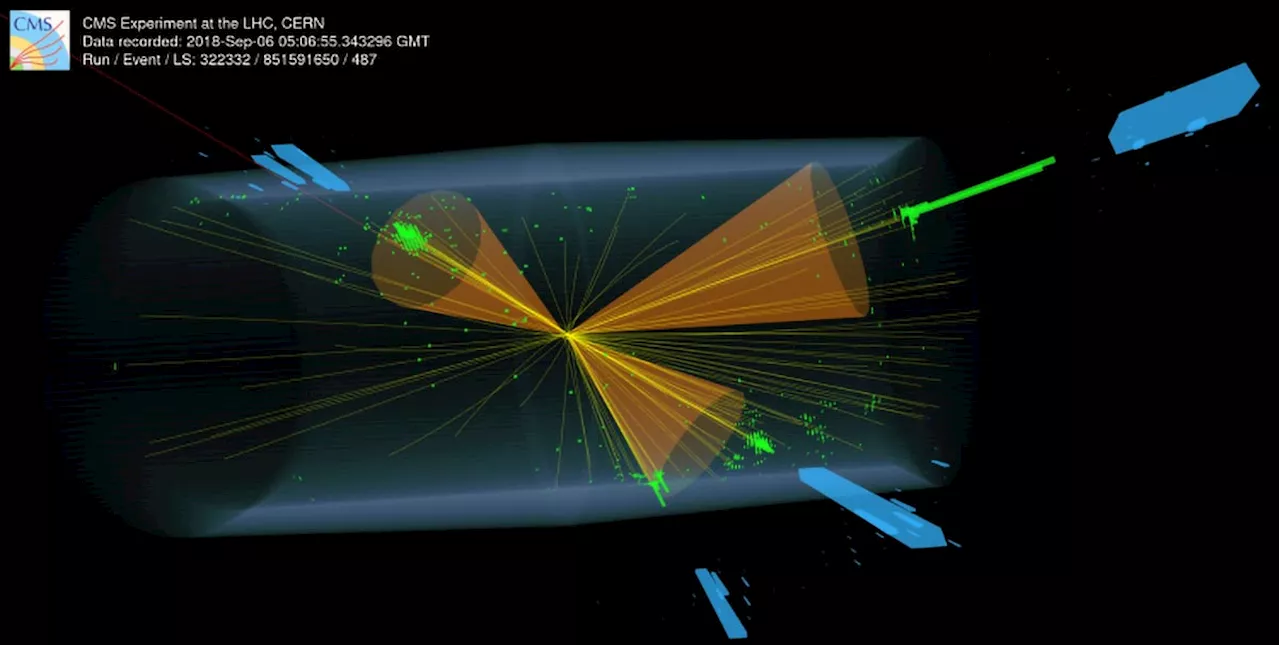Science, Space and Technology News 2024
The ATLAS and CMS collaborations are using state-of-the-art machine learning techniques to search for exotic-looking collisions that could indicate new physics. Credit: S Sioni/CMS-PHO-EVENTS-2021-004-2/M RaynerBy training AI to recognize and differentiate between typical and atypical jets, researchers can identify potential new physics hidden within particle collisions. Recent advancements were highlighted at a physics conference, showing the progress and potential of these AI applications.
Sifting through the billions of collisions that occur in the LHC experiments without knowing exactly what to look for would be a mammoth task for physicists. So, instead of combing through the data and looking for anomalies, the ATLAS and CMS collaborations are lettingtechniques to search for pairs of “jets.” These jets are collimated sprays of particles originating from strongly interacting quarks and gluons. They are particularly difficult to analyze, but they could be hiding new physics.
United Kingdom Latest News, United Kingdom Headlines
Similar News:You can also read news stories similar to this one that we have collected from other news sources.
 New method enhances X-ray microscopy for detecting tiny defectsX-ray microscopes are essential for examining components and materials because they can be used to detect changes and details in the material. Until now, however, it has been difficult to detect small cracks or tiny inclusions in the images.
New method enhances X-ray microscopy for detecting tiny defectsX-ray microscopes are essential for examining components and materials because they can be used to detect changes and details in the material. Until now, however, it has been difficult to detect small cracks or tiny inclusions in the images.
Read more »
 New insights into the formation of tiny cloud particles in the ArcticMobile measuring devices enable the research of atmospheric processes in higher air layers that have not yet been recorded by conventional measuring stations on the ground. The airborne flight systems therefore make an important contribution to research into the causes of climate change in the Arctic.
New insights into the formation of tiny cloud particles in the ArcticMobile measuring devices enable the research of atmospheric processes in higher air layers that have not yet been recorded by conventional measuring stations on the ground. The airborne flight systems therefore make an important contribution to research into the causes of climate change in the Arctic.
Read more »
 Detecting the 'baby blues' in dads, new screening tool developed in Northeast OhioAnchor and reporter at News 5 Cleveland
Detecting the 'baby blues' in dads, new screening tool developed in Northeast OhioAnchor and reporter at News 5 Cleveland
Read more »
 How our brains develop facial recognition skills: New face-detecting brain circuitScientists have uncovered a brain circuit in primates that rapidly detects faces. The findings help not only explain how primates sense and recognize faces, but could also have implications for understanding conditions such as autism, where face detection and recognition are often impaired from early childhood.
How our brains develop facial recognition skills: New face-detecting brain circuitScientists have uncovered a brain circuit in primates that rapidly detects faces. The findings help not only explain how primates sense and recognize faces, but could also have implications for understanding conditions such as autism, where face detection and recognition are often impaired from early childhood.
Read more »
 Researchers use machine learning to detect defects in additive manufacturingResearchers have developed a new method for detecting defects in additively manufactured components.
Researchers use machine learning to detect defects in additive manufacturingResearchers have developed a new method for detecting defects in additively manufactured components.
Read more »
 Satellite megaconstellations trash to surge 646%, damage ozone hole furtherNew research reveals that aluminum oxide particles released during reentry of satellites are jeopardizing ozone recovery.
Satellite megaconstellations trash to surge 646%, damage ozone hole furtherNew research reveals that aluminum oxide particles released during reentry of satellites are jeopardizing ozone recovery.
Read more »
